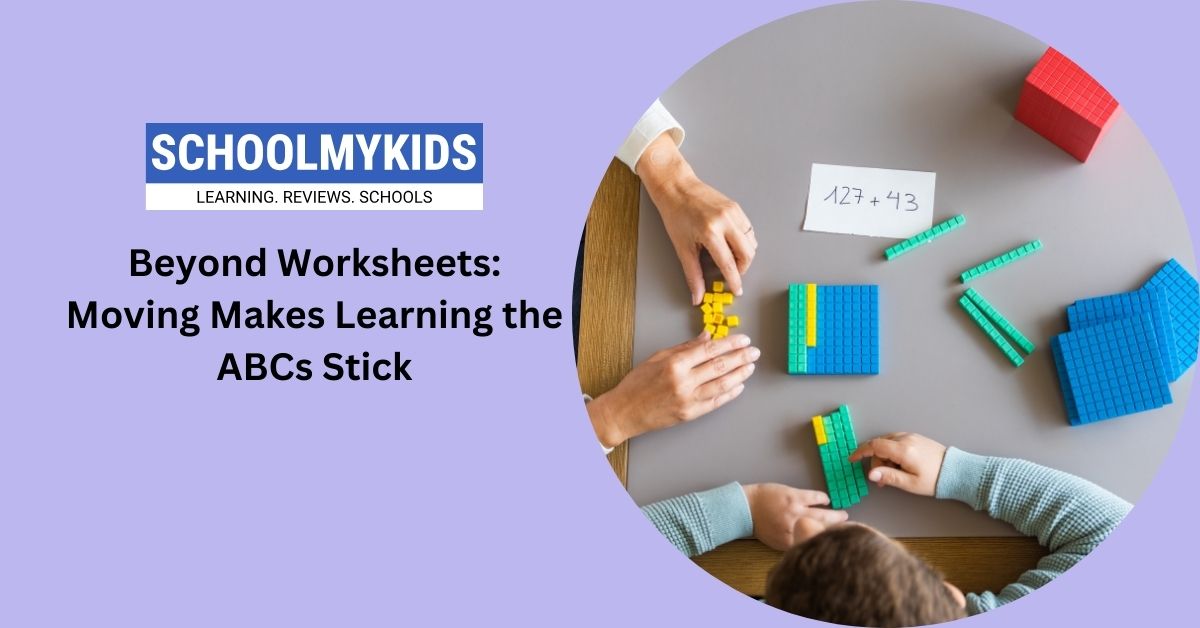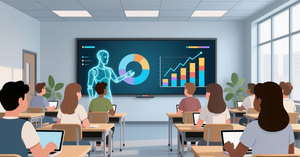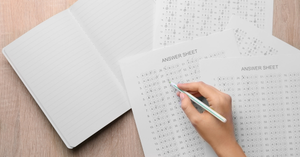Learning the ABCs is a fundamental step on the path to reading fluency. Traditionally, this has involved drills with flashcards, worksheets, and repetitive writing. These methods can be effective, but a new study suggests there might be a more engaging and distinctly different way to teach young children their letters: incorporating whole-body movement into the learning process.
Traditional Methods: A Focus on Sitting Still
- Rote memorization and repetition: Traditional ABC instruction often relies on repetitive activities like writing letters multiple times or reciting the alphabet in order. While this can help with memorization, it can also become monotonous for young learners.
- Limited sensory engagement: Traditional methods primarily rely on visual and auditory learning (seeing letters and hearing sounds). This approach may not cater to children who learn best through kinesthetic (movement) or other sensory modalities.
- Passivity: Sitting at desks for extended periods can be challenging for young children. Traditional methods often require students to be passive recipients of information, which can hinder engagement and focus.
Movement-Based Learning: A Dynamic Shift
- Active Engagement: Movement-based learning transforms the learning experience from passive absorption to active participation. Children move their bodies in ways that connect to the letter sounds, making them active participants in their own learning.
- Multisensory Learning: This approach engages multiple senses – kinesthetic (movement), auditory (hearing sounds), and potentially visual (seeing letter shapes). This caters to various learning styles and can lead to deeper understanding.
- Enhanced Memory: The act of physically moving reinforces the letter-sound association. Creating these connections in the brain strengthens memory and makes it easier to recall information later.
Here’s a table summarizing the key differences between traditional and movement-based approaches:
| Feature | Traditional Approach | Movement-Based Learning |
| Learner Role | Passive recipient of information | Active participant in learning |
| Sensory Engagement | Primarily visual and auditory (seeing letters, hearing sounds) | Kinesthetic (movement), auditory (hearing sounds), potentially visual (seeing letter shapes) |
| Focus | Rote memorization and repetition | Active engagement and deeper understanding |
The Importance of Letter-Sound Association
One of the first hurdles in reading is mastering letter-sound association. Children need to understand that the letter “c” makes the “cuh” sound in “car” and the “s” sound in “sauce.” This seemingly simple skill lays the groundwork for decoding words and eventually reading fluently.
Why Traditional Methods Might Fall Short
Traditional methods like repetitive writing and picture association can be helpful, but they may not fully engage young learners. Children have a natural desire to move, and this movement can be harnessed to enhance their learning experience.
Enter the Power of Movement-Based Learning
A recent study compared two groups of kindergartners and first graders. One group received traditional ABC instruction with flashcards, worksheets, and writing practice. The other group participated in the same activities, but with the addition of whole-body movements that mimicked the letters’ sounds.
Imagine children slithering like snakes for the hissing “s” sound or jumping like kangaroos for the “k” sound. These movements weren’t just playful distractions; the study found that the movement-based learning group showed significant advantages:
- Improved Recall: Children who incorporated movement were better at recalling letter-sound pairings compared to the traditional learning group.
- Enhanced Recognition of Difficult Sounds: The study specifically looked at sounds that can be tricky to distinguish, like the “c” sound in “cat” and “sauce.” The movement group showed a remarkable doubling in their ability to recognize these challenging sounds.
Movement Makes Learning Memorable
There’s a scientific reason why movement-based learning works. When children move their bodies in a way that connects to the letter sound, they create stronger neural connections in the brain. These connections solidify the learning and make it easier to recall the information later.
Beyond the ABCs: Movement Benefits All Learners
While the study focused on the ABCs, the benefits of movement-based learning can extend to various subjects. Imagine acting out historical events in a social studies lesson or using physical gestures to represent fractions in math. Movement can transform learning from passive absorption to active engagement, leading to better understanding and retention across the curriculum.
How to Integrate Movement into Your ABC Lessons
So, how can you incorporate movement into your ABC lessons? Here are some ideas:
- Get Active with Letter Shapes: Turn lowercase letters like “l” and “t” into jumping jacks or pretend to be a lowercase “x” by lying on your stomach with arms and legs outstretched.
- Animal Antics: Associate animal movements with letter sounds. Hiss like a snake for “s,” wiggle like a worm for “w,” and stomp like an elephant for “e.”
- Sing and Move: There are countless ABC songs with catchy tunes and simple dance moves. Singing and moving together reinforces letter sounds and creates a joyful learning experience.
Conclusion: Move Your Way to Reading Success
Learning the ABCs doesn’t have to be confined to worksheets and rote memorization. By incorporating whole-body movement, educators and parents can create a more engaging and effective learning environment. So, get those wiggles out! Let’s turn learning into a moving experience that sets children on the path to reading success.









Be the first one to comment on this story.